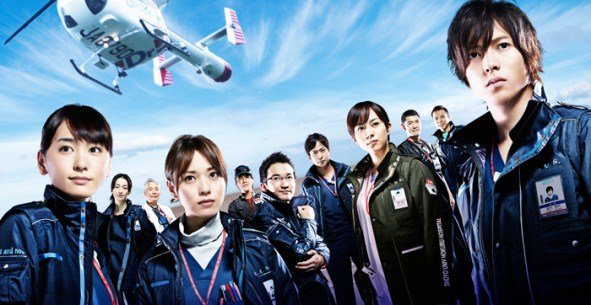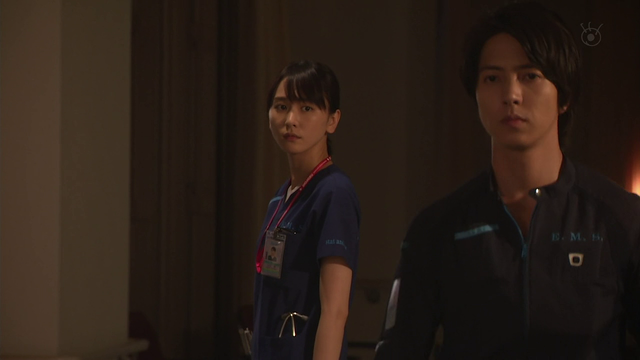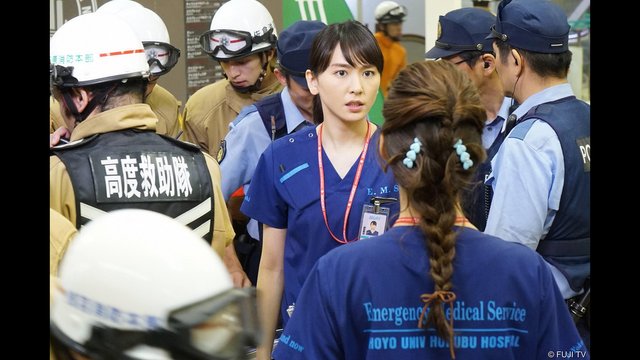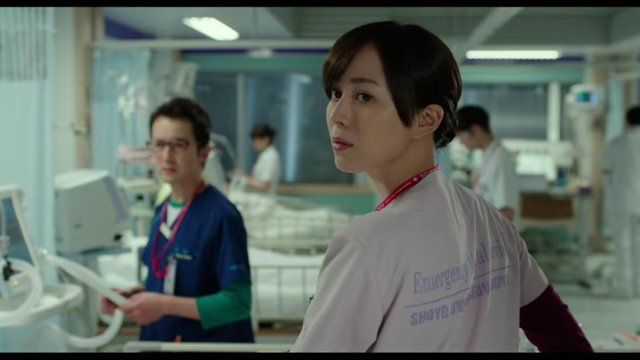
To be an doctor; for many years education, experience and human life is a serious profession that requires cold blood. Assess patients, diagnose diseases, and treat various conditions is one of the basic tasks of the doctor. The basic philosophy of the doctor is, of course, based on between life and death and includes many things in related with.
It is not possible to observe such a serious profession and observe it for a long time. Since Its one of the professions that I respect and I was a little interested in, I've always liked the doctor concept tv series.
the Doctor-themed series is from Japan. I'm going to talk about the Code Blue series, which has been broadcasting on Fuji TV in 2008 and is full of 3 seasons. The first season was released in 2008, the second season in 2010, and the third in 2017. In addition, a special section was published after the first season. Although it is annoying to have the audience pause at such long intervals, I can say that it is worth waiting and watching.
Nishiura Masaki and Hayama Hiroki are in the director's chair. Screenwriter Hayashi Koji, producer Masumoto Jun.
The cast is quite good. We see Tomohisa Yamashita in the main roles in this series.
In addition to Yamapi, Aragaki Yui, Toda Erika and Asari Yosuke are the main roles. Other than that Higa Manami, Kodama Kiyoshi, Katsumura Masanobu, Ryo, Yanagiba Toshiro, Sugimoto Tetta, Terajima Susumu, Yuui Ryoko, Hiwatashi Shinji, Ikeda Kimiko, Kaneda Mika is the main staff of the directory.
“Code Red” ,“Code Blue” , “Code Black”…sometimes wonder what these terms mean when they hear what they are using in a hospital (or more likely, when we hear that they use it in a tv series). Technically, there is no official definition for a Code. However, doctors often use the term in a hospital or clinic for emergency situations in cases of emergency / emergency treatment. In fact, this is a slang used by doctors.
Each hospital or clinic decides which codes to use to inform and inform potential emergency personnel. Many organizations use colors to identify specific types of emergency.
“Code Red" and "Code Blue" are terms that are often used to refer to cardiopulmonary (circulatory and respiratory-related) prevention, but also for other types of emergencies (eg. bomb threat, terrorist activity, child abduction or mass casualties) the code Kod can be given.
As you have seen, our series name is Code Blue . It got itss name from these common codes. If you follow the episodes with the name of the event flows, you will understand. After a short technical detail about the codes, lets talk about it season-based.

If it can be treated a second before, the heart may start to beat again.
If there is an extra helicopter, an endangered life could be saved.
If one more life can be saved, the Japanese medical community can regain confidence.
There are more lives to save in this country.
In the first season of the series where we will feel the importance of human life until our marrows, we will encounter 4 intern doctors. We've also met Doctor Heli on the main event this season. Doctor Helicopter system is a legalized system in Japan in June 2007. A health team is sent to the patients by helicopter to provide medical care as soon as possible. For this system, which is very useful for the patients and fresh patients, 4 interns will be taken to the hospital. In order to become this Helicopter Doctor, interns are competing and trying to prove themselves. The four leading roles mentioned above portray the characters who undertake this internship: Aizawa, Shiraishi, Hiyama, Fujikawa.
Aizawa is the person who draws attention as a talent and coolness by the helicopter to go to the scene with the specialist doctor. Others will prove themselves in order and elbettte over time.
In this season, our trainee doctors encounter traumatic medical conditions in the areas where they go by helicopter, and they are able to overcome these problems in cold air. The situations they face and the medical interventions they are taking will give us little hints about what their future branch will be. In addition to personal ambitions, our interns who witnessed the fragility of life in this season; we will witness how they grow up as personal and professional.
At the end of the first season, our doctors face a large tunnel accident. In this special case, this tunnel case is discussed. The situation of the four living traumas, the resignation of Kuroda-sensein, and the Chiba train accident, which broke out at the end of the special section and signaled the start of the second season, are being processed in a special section. (Meanwhile, Kuroda-sensei is one of the specialist doctors who train these staff members in the emergency department)

Second season: Aoiwa Kosaku, Shiraishi Megumi, Hiyama Mihoko and Fujikawa Kazuo were a year and a half from Shoyo University's appointment to the North Hospital. Scholarship programs take only three months (specialist training programs) as flight physicians, and after graduation they have to think about their lives. Aizawa's grandmother is present this season. Aizawa is having a hard time because of his grandmother's illness and he remembers his childhood memories. He begins to have doubts about his duties and cannot find a clear path to his future. Meanwhile, Shiraishi Megumi, too, left his old teacher Kuroda Shuji's right-hand arm cut and therefore resigned. There are problems and remorse about this. Mitsui's ex-husband Tachibana, who is one of the emergency service experts who are assigned to approve the scholarship program that will determine their future, is forcing our trainees this season a little more.
In the third season, you say that my children have grown up and have become a doctor. Three generations of doctors are in this season. Aizawa and the other doctors that educated by eldest are now approaching retirement. Aizawa and other friends are now experts. This time we have 3 interns coming to our developing doctors. We are gaining new acquisitions with them.

It's been 10 years since the Code Blue team got their first scenes on the medical scene. During this time each of them started a career for themselves: Aizawa left the emergency department at his last hospital and now works as a neurosurgeon aiming the best performance every day. Shiraishi is the leader of flight physicians in Shohoku Emergency Health Services. Hiyama Mihoko wanted to be a flight physician, but left Shohoku Emergency Health Service to work as a birth specialist. Saejima Haruka is still working as a nurse for flight doctors and continues her career as a senior employee. He also works as a plastic surgeon specialist in Shikaishi, Shohoku Emergency Health Services like Shiraishi. Each member faces a new challenge that is waiting for them to face a life-or-death situation every day.
There is a lot to learn about life in this series. In each episode we encounter a new quintessential situation and a situation, touching the background of the characters and taking the opportunity to look at ourselves in the mirror. Slice of life.
There is a really thin line between life and death. Regardless of the value of our health, the value of life we are trying to sustain / maintain. I recommend you to watch this series in order to create awareness. I have no doubt that you will gain an interest in life.
Also closing song that start with the words "What value left is there in this world I live in?" is Hanabi from Mr.Children.
It's quite meaningful and a nice song.
"Everyone carries sorrow in them, but hopes are good for tomorrows."
Congratulations @nordlicht! You received a personal award!
You can view your badges on your Steem Board and compare to others on the Steem Ranking
Vote for @Steemitboard as a witness to get one more award and increased upvotes!
Downvoting a post can decrease pending rewards and make it less visible. Common reasons:
Submit